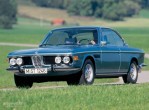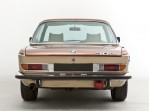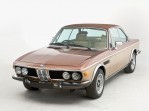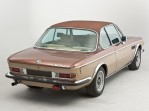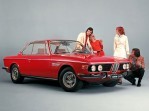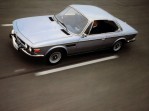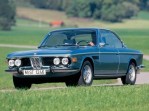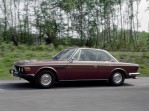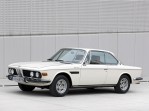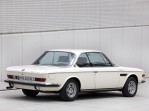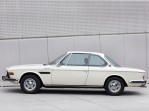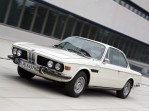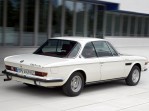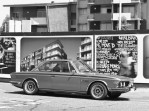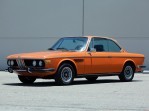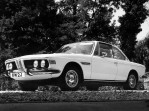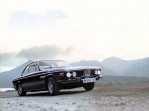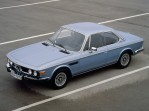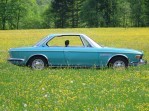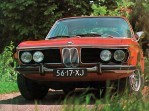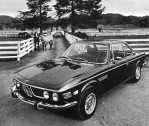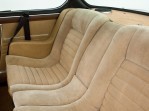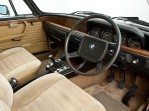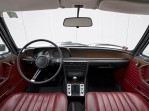Body style: Coupé (two-door)
Segment: Premium Coupe
Production years: 1971, 1972, 1973, 1974, 1975
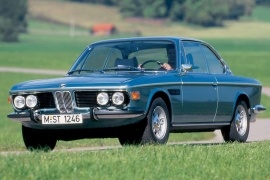 24 Photos
24 PhotosWhen BMW introduced the so-called "Neue Classe," it introduced a new generation of vehicles that eventually saved the Bavarian carmaker, and the 3.0 CSI was part of them.
BMW introduced the E9 in 1968 with a regular, 2.8-liter carburetor engine. In 1971 it introduced two versions based on the same bodywork: the 3.0 CS and the 3.0 CSI. The latter was a daring move towards the fuel injection systems, which were not that common at those times. It was a checkpoint for the glorious 3.0 CSL, a car that won six European Touring Car Championships.
Wilhelm Hofmeister signed the car's design and created the unique shape of the C-pillar, later known as "The Hofmeister kick." He made a streamlined bodywork with a raked-forward front fascia which sported four headlights and a black grille. In the middle, he placed the chromed trims for the "kidney-grille," which was another basic design pattern used by the German brand. Thanks to the frameless doors, the E9 was considered a fake cabriolet. With all the windows rolled down, there was no B-pillar between the A- and C-pillars.
Inside, the E9 featured two bucket seats at the front and a bench profiled for two adults in the back. The carmaker installed safety belts for all four occupants. In front of the driver, the carmaker installed the four-dial instrument cluster, while on the passenger side, there was a wide shelf. A center console filled the space between the front seats and sported the buttons for all four power windows.
Under the hood, BMW installed an inline-six engine fed by a Bosch D-Jetronic injection system. It provided 200 hp, and it sent them to the rear wheels via a four-speed manual transmission. For the U.S. market, the German carmaker offered a three-speed automatic gearbox.
BMW 3.0 CSi 1971, 1972, 1973, 1974, 1975
- 3.0L 4MT (200 HP)
BMW 3.0 CSi
3.0L 4MT (200 HP)
ENGINE SPECS - 3.0L 4MT (200 HP) | |
|---|---|
| Cylinders: | L6 |
| Displacement: | 2986 cm3 |
| Power: | 147.1 KW @ 6000 RPM 200 HP @ 6000 RPM 197 BHP @ 6000 RPM |
| Torque: | 201 lb-ft @ 3700 RPM 273 Nm @ 3700 RPM |
| Fuel System: | Multipoint Injection |
| Fuel: | Gasoline |
PERFORMANCE SPECS | |
|---|---|
| Top Speed: | 139 mph (224 km/h) |
| Acceleration 0-62 Mph (0-100 kph): | 7.6 s |
TRANSMISSION SPECS | |
|---|---|
| Drive Type: | Rear Wheel Drive |
| Gearbox: | 4-speed manual |
BRAKES SPECS | |
|---|---|
| Front: | Discs |
| Rear: | Discs |
TIRES SPECS | |
|---|---|
| Tire Size: | 195/70 VR14 |
DIMENSIONS | |
|---|---|
| Length: | 183.4 in (4658 mm) |
| Width: | 66.4 in (1687 mm) |
| Height: | 53.6 in (1361 mm) |
| Front/rear Track: | 56.9/55.2 in (1,445/1,402 mm) |
| Wheelbase: | 103 in (2616 mm) |
| Ground Clearance: | 5.5 in (140 mm) |
| Cargo Volume: | 15.9 cuFT (450 L) |
| Aerodynamics (Cd): | 0.4 |
WEIGHT SPECS | |
|---|---|
| Unladen Weight: | 3131 lbs (1420 kg) |
| Gross Weight Limit: | 3858 lbs (1750 kg) |
FUEL ECONOMY (NEDC) | |
|---|---|
| Combined: | 21.6 mpg US (10.9 L/100Km) |
